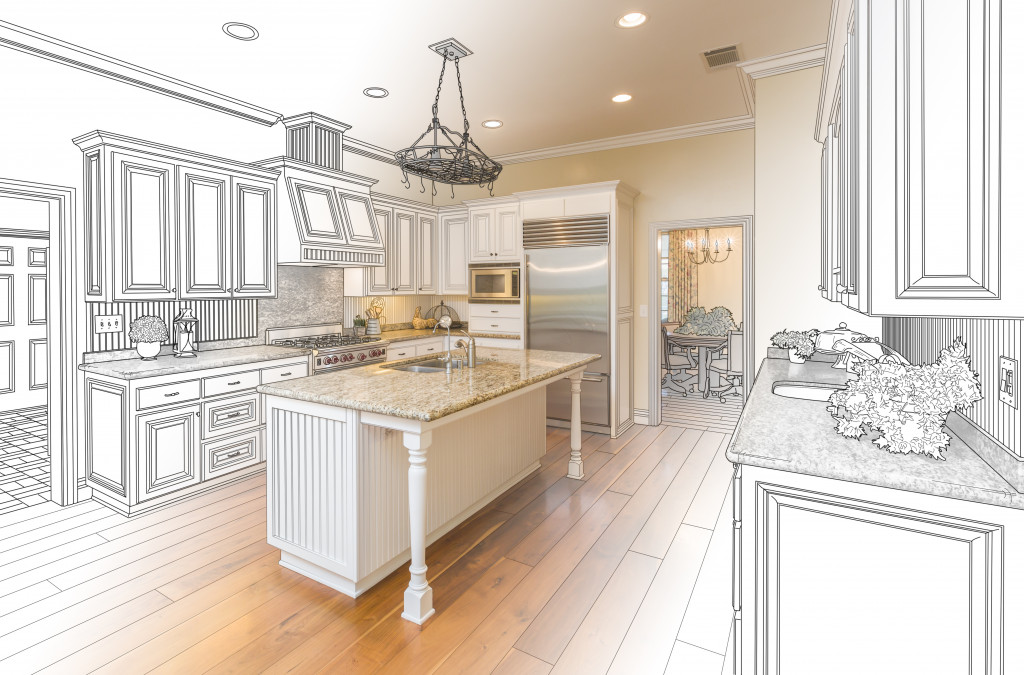- Create a map of your space to help identify any disjointed areas and create clear pathways.
- Utilize furniture with hidden storage and wall space, and donate or sell items to reduce clutter.
- Choose a color palette that flows nicely from one space to the next, and use accents to tie spaces together.
- Add visual interest by incorporating artwork and unique decor to draw the eye from one area to the next.
- Open up windows and add artificial lights to create warmth and improve visibility.
Do you ever feel like your home could use some improvement when it comes to the flow of the space? If so, you’re not alone. Many homeowners struggle with the arrangement of their homes and how well the rooms transition from one to the next. This can make it feel difficult to navigate your home with ease and can even impact your mood. Fortunately, you can do a few things to improve the transitions in your house and create a more cohesive and relaxing atmosphere.
1. Map it Out:
The first step in creating a better home flow is to create a map of your space. This will give you a visual representation of the layout and help you identify any disjointed areas. You can use a simple sketch or utilize an online planning tool to map out the space. Consider factors like the location of doors and windows, the proximity of furniture to walkways, and the placement of decor items. Once you have a clear idea of the layout, you can begin making adjustments to improve the flow.
2. Create Clear Pathways:
One of the most common issues that can impact home flow is clutter. Clutter is a major obstruction to movement throughout the house, so it’s important to clear pathways and create an open space. Here are some tips:

a. Store items away you don’t need
Many home items are simply taking up space and creating an obstacle. Consider storing items you don’t need daily, such as seasonal decorations or extra kitchen supplies.
b. Make use of furniture with hidden storage
Furniture pieces with built-in storage are a great way to keep items out of sight and free up space. Look for coffee tables, ottomans, and bookcases with hidden compartments to maximize storage.
c. Utilize wall space
Don’t forget about the walls! Wall-mounted shelves and hooks are a great way to keep items off the floor and out of the way. You can also use floating shelves to display items, but make sure they don’t interfere with the room’s flow.
d. Donate or sell items
If you’re having trouble parting with certain items, consider donating them to a local charity or selling them online. This will not only help you create a more open space, but it can also benefit someone in need.
3. Consider Color:
Another way to improve your home flow is to consider the colors you use in each room. Choose a color palette that flows nicely from one space to the next to create a sense of cohesion throughout the home. This doesn’t mean you must use the same color in each room. Instead, choose colors that are complementary and work well together.
You can also use accents to connect the spaces and create a harmonious flow. For example, mismatched floors between two adjoining rooms can flow better if you use custom square nose transition strips. This kind of molding will both unite the floors and add a decorative touch. You can also use area rugs, curtains, and wall art to bring a sense of unity throughout the home if you don’t want to commit to a cohesive color palette.

4. Add Visual Interest:
While it’s important to create a cohesive look throughout your home, it’s also essential to add elements of visual interest that will catch the eye and create a sense of excitement. Add artwork, statement lighting, and unique decor pieces to add personality to your space. These elements can also help improve your home’s flow by drawing the eye from one area to the next and creating a sense of connection between the rooms.
5. Don’t Forget About Lighting:
Finally, paying attention to your space’s lighting is essential. Good lighting can help to create a sense of warmth and coziness while also improving the flow of your home. Consider adding natural lighting by opening up windows and adding light filters like sheer curtains. You can also add artificial lights like lamps and ceiling fixtures to create warmth and improve visibility throughout your home.
Improving the flow of your home can have a significant impact on your overall quality of life. With these tips in mind, you can create a welcoming, cohesive, and relaxing space for you and your family to enjoy. From mapping out the area to adding visual interest and lighting, many simple and cost-effective ways exist to create a better home flow. You can transform your home into a tranquil oasis with patience and creativity.


